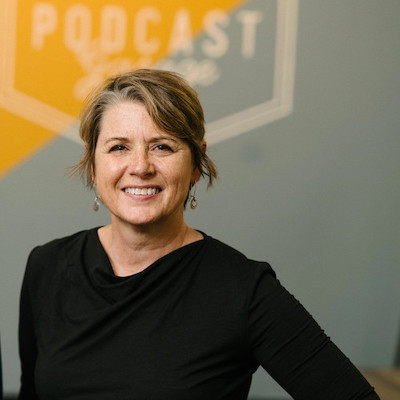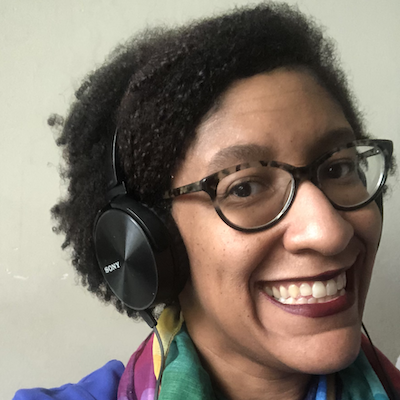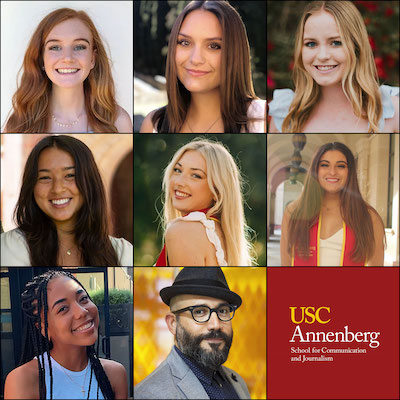Publishing goes direct as news goes conversational
At this time of year in the U.K., families around the country are pulling Christmas crackers, invariably containing a bad joke and a trivia question of varying degrees of difficulty alongside a paper crown and a plastic yo-yo. This holiday season, here’s my Christmas cracker journalism trivia question for you all:
Q: What do Finland, Italy, Argentina, Hong Kong, Turkey, and the U.K. all have in common?
A: They’re all countries where the Reuters Institute Digital News Report 2021 shows WhatsApp is the most used social media platform, ahead of Facebook, Twitter, YouTube, Instagram, TikTok, and the like.
Even more interestingly, these are all countries where the gap between overall usage of WhatsApp and its usage for news is greater than 50%.
Tl;dr: Lots of people around the world are using WhatsApp, not many are using it for news.
In total, in 28 of the 46 markets surveyed by the Reuters Institute for the Study of Journalism for DNR 2021, there’s a gap of over 40% between overall usage of messaging apps (including WhatsApp, Facebook Messenger, Telegram, Line, and others) and their usage for news.
All this begs an important question: If messaging apps are among our audiences’ most-used apps, why — as an industry — are we not doing more to engage them there?
The corporate world has quickly adapted to the ubiquity of conversational interfaces and has found compelling reasons to invest in reaching their audiences and customers there. Messaging apps aren’t subject to the whims of algorithms, so companies hold a more direct relationship with their audience. Conversational interfaces are extremely familiar to audiences and offer an increasing array of interactivity, so open rates, clickthrough rates and task completion are much higher than with email (and traditional SMS). ROI is positive. Want to upgrade your phone, book a test drive for a car, order food delivery? You can do that through chat now.
For newsrooms and publishers, there is a big opportunity: We can publish directly to where new and existing audiences are spending all of this time and we can create a new relationship outside of those mediated by social media platforms, which are difficult to monetize and where our reach is determined by non-transparent, capricious algorithms. Direct publishing through conversational platforms offers a mobile-native, highly interactive experience in apps and interfaces that most people are using every day. Distribution is direct and on-demand, opportunities for personalization abound, and monetization through advertising or reader revenue is much more straightforward than other social media. What is even better is that conversation API services let us launch similar products on a range of messaging apps without requiring highly bespoke strategies for each platform or protocol — the same product can be easily adapted for WhatsApp, RCS, Telegram, and Facebook Messenger. The news and content become the product, not the tech through which it’s being accessed.
What could this conversational future look like? Potential implementations range from smoother mobile subscription flows and campaigns to personalized daily briefings via chat, from audience-driven question-based discovery (“Where can I get a Covid-19 vaccine in my area?”) to visually rich self-guided storytelling. There’s huge scope for new and creative products that can provide audiences with engaging experiences.
The green shoots of direct publishing are springing up in Asia, Eastern Europe, and Africa, where publishers are successfully pioneering offerings on platforms such as Telegram, WhatsApp, and Viber. In these regions, newsrooms have identified that their audiences are already highly active on messaging platforms, and are driving their strategy based on this fact. There have been some promising projects from community news in the U.S. — El Tímpano and Documented are some interesting recent examples.
The large “overall use” and “use for news” gap for messaging platforms highlighted in so many of the markets surveyed for DNR is evidence that there’s ample room for growth in conversational news. In 2022, let’s seize the opportunity and design editorial products that engage our audiences in new and creative ways on the messaging platforms they’re increasingly using every day.
Tom Trewinnard is COO and co-founder of Fathm.

At this time of year in the U.K., families around the country are pulling Christmas crackers, invariably containing a bad joke and a trivia question of varying degrees of difficulty alongside a paper crown and a plastic yo-yo. This holiday season, here’s my Christmas cracker journalism trivia question for you all:
Q: What do Finland, Italy, Argentina, Hong Kong, Turkey, and the U.K. all have in common?
A: They’re all countries where the Reuters Institute Digital News Report 2021 shows WhatsApp is the most used social media platform, ahead of Facebook, Twitter, YouTube, Instagram, TikTok, and the like.
Even more interestingly, these are all countries where the gap between overall usage of WhatsApp and its usage for news is greater than 50%.
Tl;dr: Lots of people around the world are using WhatsApp, not many are using it for news.
In total, in 28 of the 46 markets surveyed by the Reuters Institute for the Study of Journalism for DNR 2021, there’s a gap of over 40% between overall usage of messaging apps (including WhatsApp, Facebook Messenger, Telegram, Line, and others) and their usage for news.
All this begs an important question: If messaging apps are among our audiences’ most-used apps, why — as an industry — are we not doing more to engage them there?
The corporate world has quickly adapted to the ubiquity of conversational interfaces and has found compelling reasons to invest in reaching their audiences and customers there. Messaging apps aren’t subject to the whims of algorithms, so companies hold a more direct relationship with their audience. Conversational interfaces are extremely familiar to audiences and offer an increasing array of interactivity, so open rates, clickthrough rates and task completion are much higher than with email (and traditional SMS). ROI is positive. Want to upgrade your phone, book a test drive for a car, order food delivery? You can do that through chat now.
For newsrooms and publishers, there is a big opportunity: We can publish directly to where new and existing audiences are spending all of this time and we can create a new relationship outside of those mediated by social media platforms, which are difficult to monetize and where our reach is determined by non-transparent, capricious algorithms. Direct publishing through conversational platforms offers a mobile-native, highly interactive experience in apps and interfaces that most people are using every day. Distribution is direct and on-demand, opportunities for personalization abound, and monetization through advertising or reader revenue is much more straightforward than other social media. What is even better is that conversation API services let us launch similar products on a range of messaging apps without requiring highly bespoke strategies for each platform or protocol — the same product can be easily adapted for WhatsApp, RCS, Telegram, and Facebook Messenger. The news and content become the product, not the tech through which it’s being accessed.
What could this conversational future look like? Potential implementations range from smoother mobile subscription flows and campaigns to personalized daily briefings via chat, from audience-driven question-based discovery (“Where can I get a Covid-19 vaccine in my area?”) to visually rich self-guided storytelling. There’s huge scope for new and creative products that can provide audiences with engaging experiences.
The green shoots of direct publishing are springing up in Asia, Eastern Europe, and Africa, where publishers are successfully pioneering offerings on platforms such as Telegram, WhatsApp, and Viber. In these regions, newsrooms have identified that their audiences are already highly active on messaging platforms, and are driving their strategy based on this fact. There have been some promising projects from community news in the U.S. — El Tímpano and Documented are some interesting recent examples.
The large “overall use” and “use for news” gap for messaging platforms highlighted in so many of the markets surveyed for DNR is evidence that there’s ample room for growth in conversational news. In 2022, let’s seize the opportunity and design editorial products that engage our audiences in new and creative ways on the messaging platforms they’re increasingly using every day.
Tom Trewinnard is COO and co-founder of Fathm.
Christoph Mergerson

Sarah Stonbely

Jonas Kaiser

Melody Kramer

Errin Haines

Julia Munslow

Anita Varma

Cristina Tardáguila

David Skok

Joy Mayer

Matt Karolian

Jim Friedlich

John Davidow

Anthony Nadler

Stephen Fowler

Tamar Charney

Candace Amos

Kerri Hoffman

Mario García

Daniel Eilemberg

Kendra Pierre-Louis

Alice Antheaume

Burt Herman

Joanne McNeil

Rachel Glickhouse

Doris Truong

Jennifer Brandel

Joshua P. Darr

Nikki Usher

Kristen Jeffers

James Green

Jesenia De Moya Correa

Robert Hernandez

Jody Brannon

Tom Trewinnard

Victor Pickard

Sarah Marshall

Wilson Liévano

Joe Amditis

Shalabh Upadhyay

Chase Davis

Don Day

Parker Molloy

Chicas Poderosas

Michael W. Wagner

j. Siguru Wahutu

Whitney Phillips

Stefanie Murray

Natalia Viana

Raney Aronson-Rath

Mike Rispoli

S. Mitra Kalita

Juleyka Lantigua

Mandy Jenkins

Cherian George

Zizi Papacharissi

Francesco Zaffarano

Larry Ryckman

Christina Shih

Joni Deutsch

Brian Moritz

Anika Anand

Rasmus Kleis Nielsen

Simon Galperin

Jesse Holcomb

Kathleen Searles Rebekah Trumble

Mary Walter-Brown

Amara Aguilar

Shannon McGregor Carolyn Schmitt

David Cohn

Gabe Schneider

Izabella Kaminska

Jennifer Coogan

Janelle Salanga

Kristen Muller

Jessica Clark

Ariel Zirulnick

Andrew Freedman

Megan McCarthy

Paul Cheung

Catalina Albeanu

Moreno Cruz Osório

Cindy Royal

Laxmi Parthasarathy

Richard Tofel

A.J. Bauer

Julia Angwin

Simon Allison

Gonzalo del Peon

Meena Thiruvengadam

Matt DeRienzo

Matthew Pressman

Ståle Grut

Eric Nuzum

Millie Tran

Gordon Crovitz

Tony Baranowski

Sam Guzik

Amy Schmitz Weiss

AX Mina
